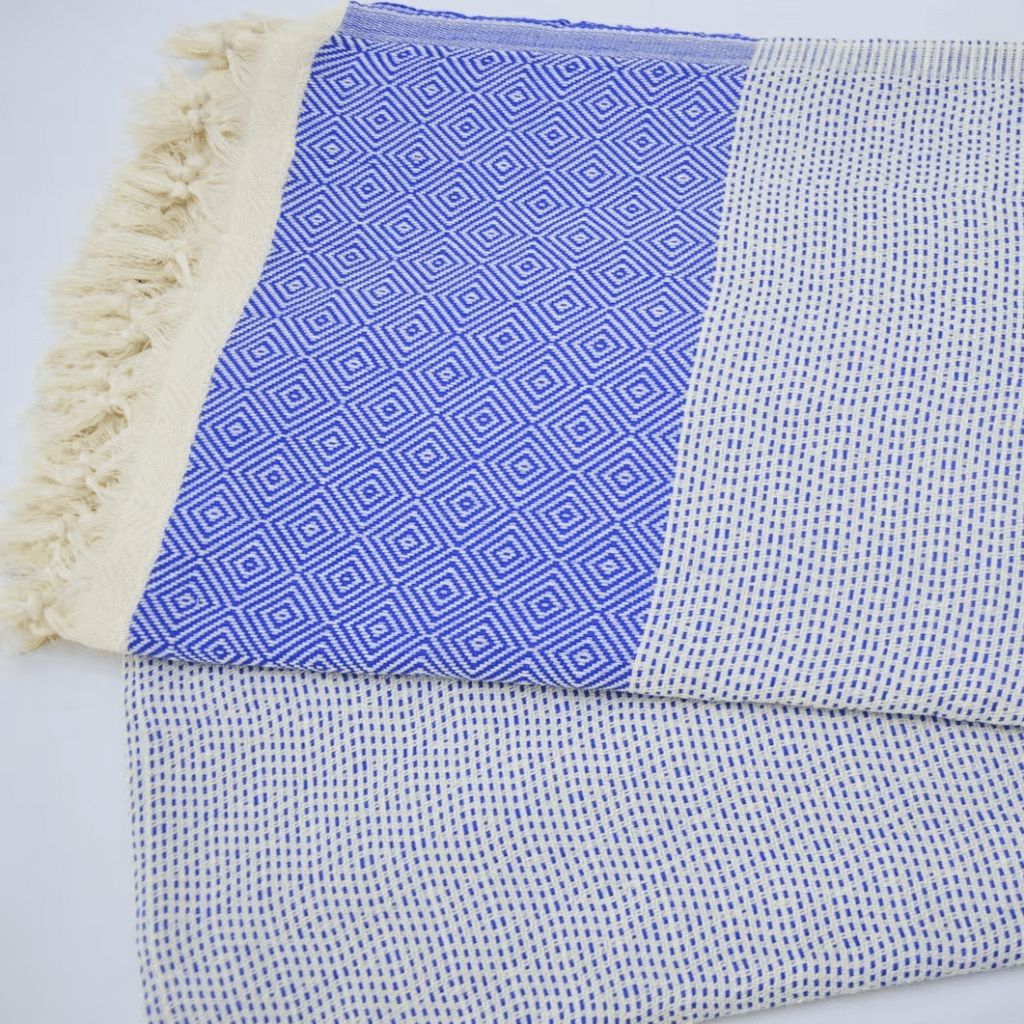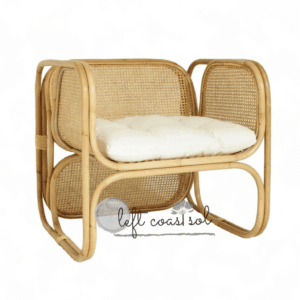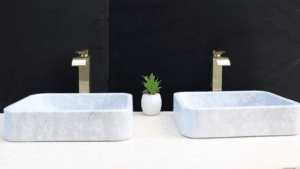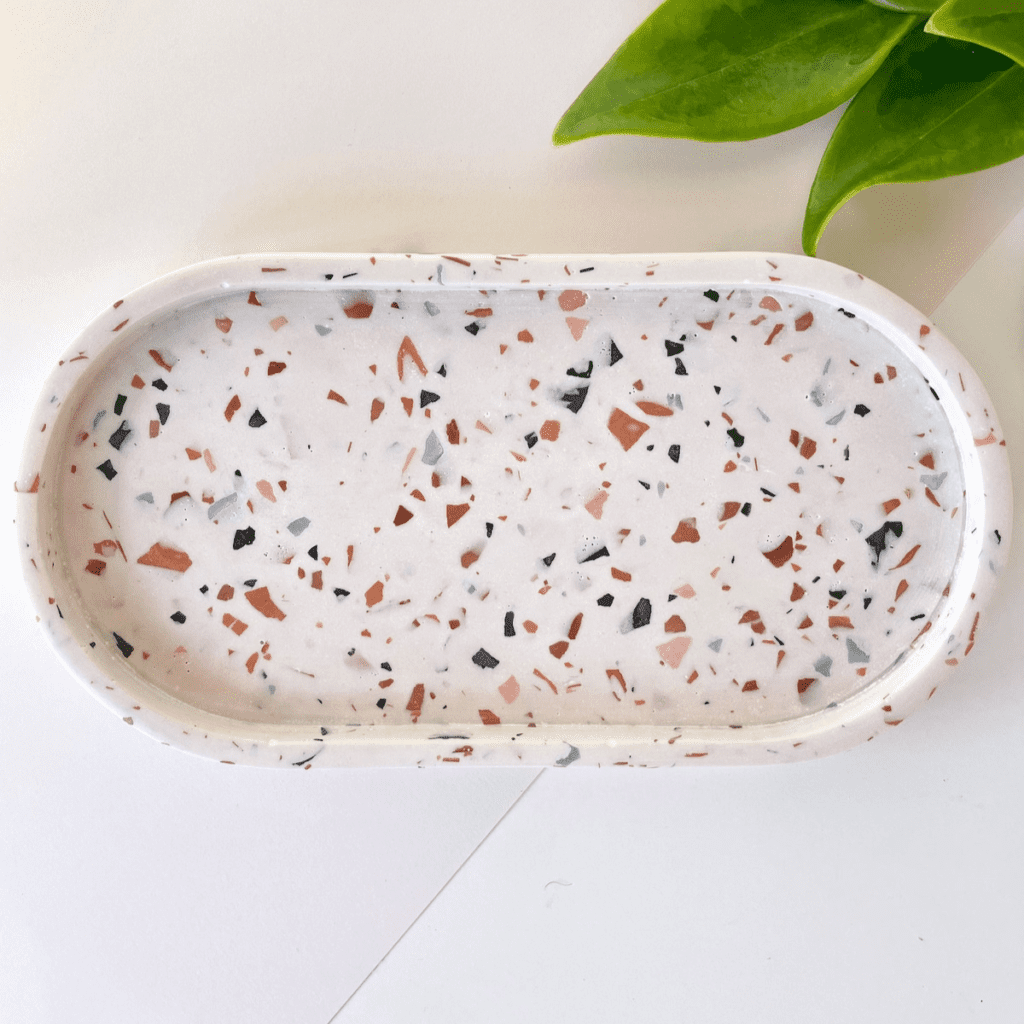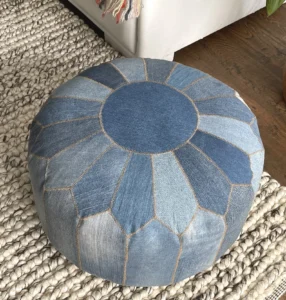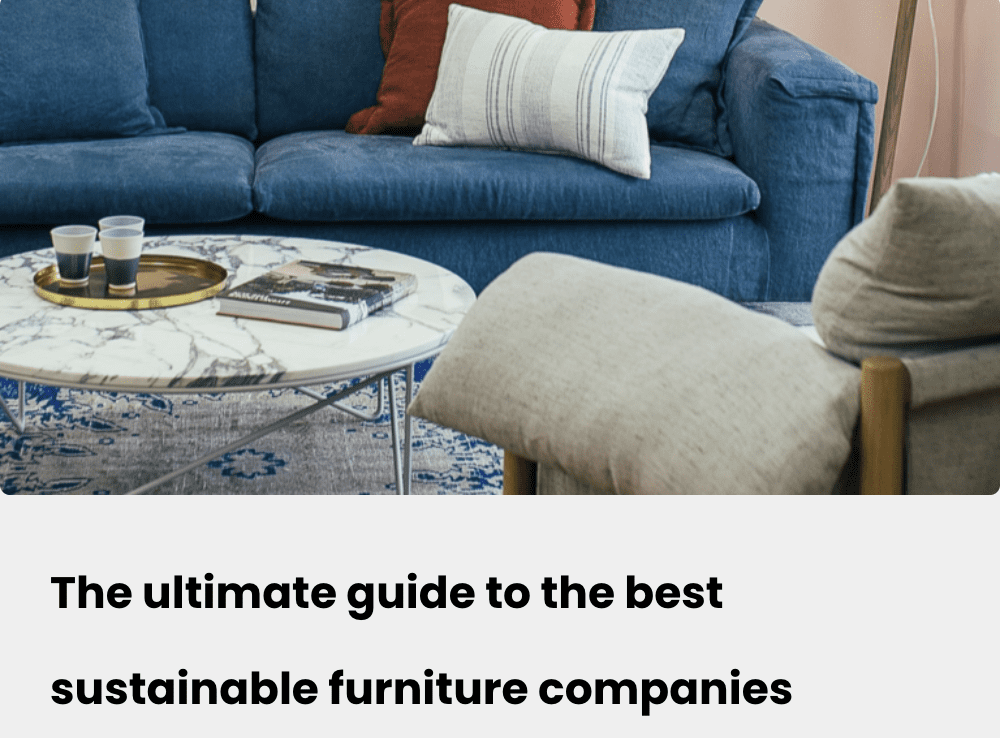

Sustainable interior design materials
In this guide, we examine the most sustainable interior design materials to look for to maintain the health of your home and the planet.
The Home Green is reader-supported and may receive a commission if you decide to make a purchase through a posted link, at no cost to you.
Considering the materials that go into your home may be one of the best ways to make it more green – and healthier, too. The great news is that the most sustainable interior design materials also tend to have the most beauty, character, and longevity. When you think about elements that feel dated in older homes, it’s rarely the high quality and natural fixtures. You don’t often hear people talk about how they hate hardwood floors but Formica countertops are a different story.
In this article, we’ll highlight some sustainable interior design materials to be on the lookout for. We'll also share examples of the most common places they are used, and what makes them better alternatives.
Quick reference summary of sustainable interior design materials
Natural textile fibers
It’s amazing how natural textiles can add both polish and warmth to a space. Mother Nature knows how to create just the right texture whose spontaneous flaws are difficult to replicate. Some of the best natural textile fibers to look for include organic linen, cotton, hemp, jute, and wool.
Turkish cotton blanket, image courtesy of WholesaleTowels
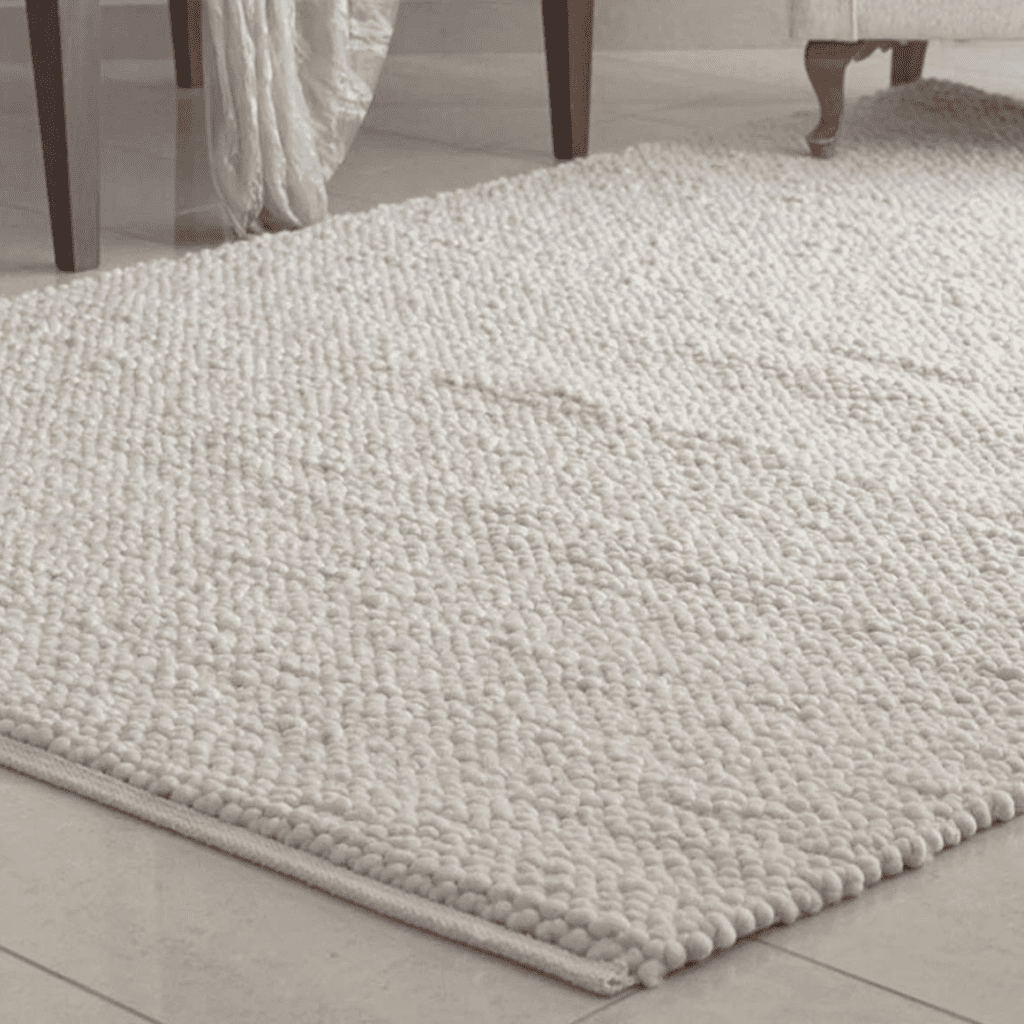

Organic wool rug, image courtesy of FlokatiShag
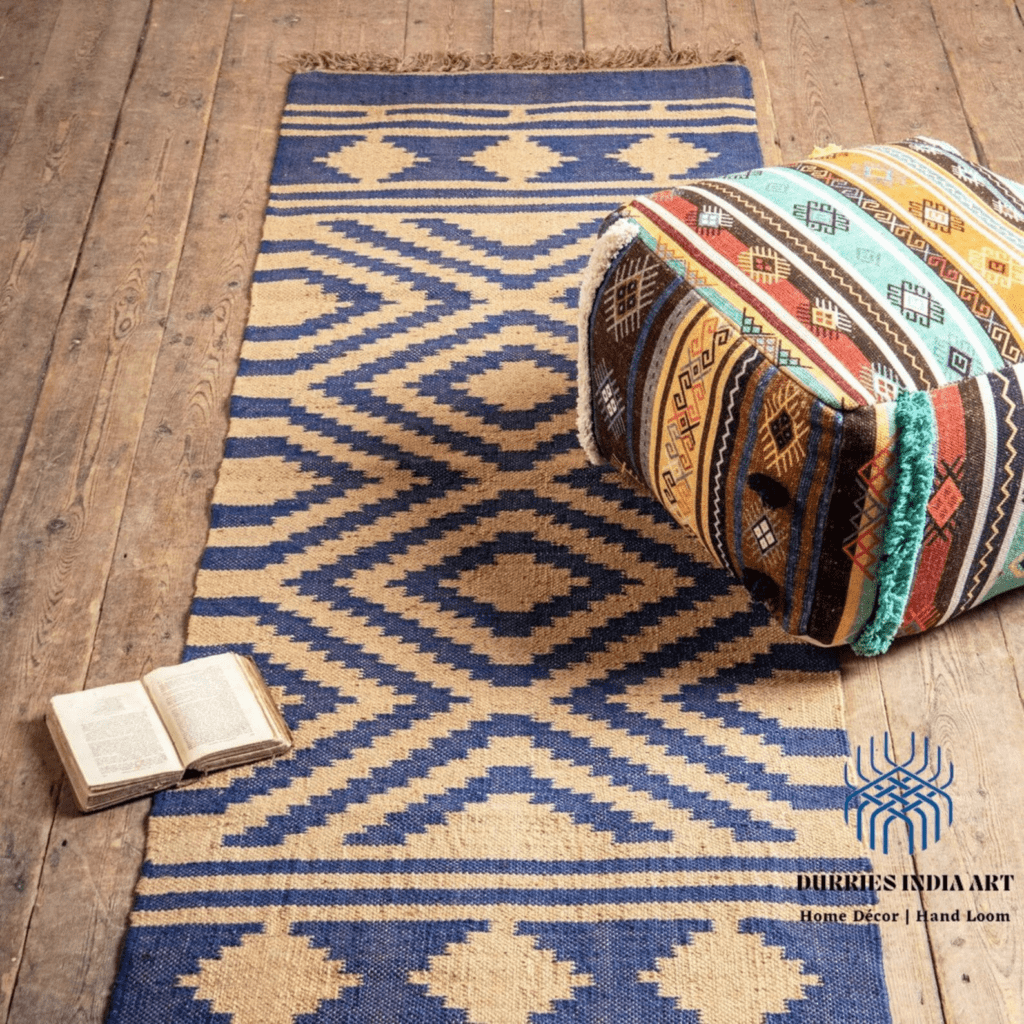

Wool jute rug, image courtesy of DurriesIndiaArt
Wood
When it comes to considering the use of wood in your home, whether it's in furniture, flooring, cabinets, or other household fixtures there are some great options to consider. With any wood, it’s important to consider its source and how it was grown and harvested to make sure it was done in a responsible manner. Luckily, there are a number of certifications you can look out for and most responsible manufacturers and retailers will proudly display these certifications. Inquire further if you don’t see them.
Reclaimed wood
As with any item in your home, repurposing something that already exists is about the most eco-friendly thing that you can do. What’s great about reclaimed wood is that the aging process naturally creates an even more rich and more interesting texture. Using an aged material is a great way to bring character to a newly built space.
Bamboo and rattan
Bamboo is a bit of a natural miracle. It’s fast-growing, resilient, durable, antimicrobial, and resistant to damage from heat. These properties help bamboo rank among the most perfect sustainable interior materials to use in flooring, furniture, blinds, and bamboo fibers can even be used in rugs, towels, and other textiles.
Rattan is another fast-growing plant that is sustainable when grown and harvested responsibly. It’s light, flexible, strong, and resistant to heat, humidity, and insect damage. These features make it an ideal furniture and home accessory material. It’s abundant in many parts of the world, particularly in Asia, and can be woven to make wicker furniture. (wicker furniture is made out of rattan, woven in the wicker style)
Although rattan is often thought of as a material used for outdoor furniture, it can be a great option for indoor use, too. Cane furniture is made from rattan and widely used indoors because of the myriad ways that it can bring texture and visual interest to an interior design. We also love rattan headboards that bring a relaxed vibe to any bedroom.
Rattan Headboard, image courtesy of The Rattan Studio
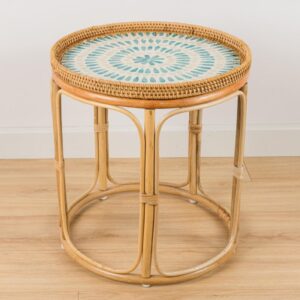

Bamboo and rattan chair, image courtesy of WhitsundayBoho
Bamboo and rattan chair, image courtesy of Left Coast Sol
Cork
Cork is another example of Mother Nature getting it right without our intervention. It’s recyclable, biodegradable, a good insulator, sound absorbing, water resistant, and antimicrobial – all without the need for added chemicals. Cork is perhaps most often thought of in the category of sustainable interior materials for flooring or wall covering material and can also be used in furniture and accessories.
Recycled metals
An exciting trend we’re seeing more recently is retailers using recycled metals in furniture, as well as interior and exterior coverings and decorative accents. These include aluminum, steel, copper and many others.
Recycled aluminum, in particular, is a material that’s seeing some innovative focus. We’re all pretty familiar with using aluminum in our daily lives and luckily, unlike single-use plastic, it is widely recycled. This makes it a much better choice for all kinds of uses in our home, including windows, doors, exterior covering and even decorative objects. Keep an eye on Alulife which makes 100% recyclable surfaces out of aluminum for building interiors and exteriors.
Recycled plastic
Plastic has become public enemy number one (for good reason) so you may be tempted to rule it out when creating a design plan. It turns out, though, that not all plastic is created equal. Depending on your need, it could be a great and sustainable solution.
One of the most sustainable ways to use plastic in your home is in its recycled form. Among our favorite recycled plastic materials, and one that is rapidly increasing in popularity, is HDPE (high-density polyethylene). HDPE is now being used by many furniture manufacturers, particularly in outdoor furniture since it is incredibly durable and holds up well to the elements. Check out our recent article on sustainable outdoor furniture brands to learn more about some specific brands using HDPE in their furniture. Some of our favorites include Polywood, Loll Designs, and Room & Board.
Related content you may enjoy
Trex®
Trex® is another brand utilizing recycled plastic in furniture, fencing and lumber. Their products are 95% made of recycled plastic film and sawdust and they boast a sustainable manufacturing process and supply chain. One of the great things about Trex® is that it is widely available at major retailers. Although it’s priced at a premium to wood, its superior durability makes it a great investment in your home.
Natural stone
Natural stone is one of the most timeless sustainable interior design materials that you can use in your home. Slate, marble, granite, travertine, and sandstone have been popular for decades (in some cases centuries). Because of this, they can be a great investment since they’re less likely to look dated in the future. Natural stone is most often thought of in use in countertops and flooring but has a lot of other uses.
Marble sinks, image courtesy of EarthyCompany
Natural stone sink, image courtesy of Laguna Marble
Terrazzo
Sustainability is built into the essence of what makes Terrazzo so beautiful. This sustainable interior design material gets its distinct mosaic look from small pieces of stone, shell, or glass suspended in cement or epoxy. Because the components are necessarily small, scraps from other projects can be used in making terrazzo. This diverts materials that would otherwise have been wasted. And because this material is made up of countless small fragments, there are endless ways to create a variety of beautiful looks. See some of our favorites, below.
Terrazzo Oval Trinket Dish, image courtesy of BrightsideDesignCo
Recycled glass terrazzo coffee table, image courtesy of CreteandSteel
Turquoise, Orange & Antarctic Gray Terrazzo Flower Vase, image courtesy of MiaTerrazzo
PaperStone®
If you’re considering a kitchen or bathroom remodel in the near future, PaperStone® is one of the sustainable interior design materials you should consider. This product is made through a process of compressing and heating recycled paper, petroleum-free resins, and natural pigment. The result is a countertop surface that is extremely durable and available in a variety of colors and thicknesses. We particularly love slate colors that create a matte surface reminiscent of soapstone.
Natural latex foam
When we think of sustainable interior design materials, the things that come immediately to mind are often the ones most visible. Considering the less visible materials used in the construction of your furniture and home, however, is just as important. While you can’t see the interior construction of your mattress or sofa, the materials used can have an impact on the toxicity and air quality of your home.
Natural latex foam is produced from the sap of rubber trees and avoids the harsh chemicals required in the production of many other types of upholstery foam. It can be used in upholstered products like chairs and sofas, and also in eco-friendly mattresses.
Recycled denim
If there’s one thing we have an abundance of in the US (besides plastic!) it has to be jeans. While jeans are often made out of natural materials and are biodegradable over time, their production uses a lot of water and other resources. And these days where it’s not uncommon for people to have double digit numbers of jeans in their wardrobe, the impact of all of this denim can be significant. All of this is what makes it so exciting to see denim finding a second life in home products.
One of the most popular ways we’re seeing denim being used includes being repurposed into things like recycled denim blankets, pillows, ottomans, and recycled denim rugs. Since jeans are made to be tough, it makes sense to repurpose them in these heavy-use items.
“Java” Recycled Denim Pouf / Footstool, image courtesy of LoominaireHome
Natural cotton fiber insulation
Another innovative way that denim is being reused in the home is by being made into insulation called natural cotton fiber insulation. The pros of this denim insulation include:
- Eco-friendliess – It diverts materials from landfills
- Ease of installation – Natural cotton fiber insulation is easier to install versus traditional fiberglass insulation since it doesn’t require the same level of skin and eye protection
- Improved air quality – Natural cotton fiber insulation does not contain any toxic chemicals, which means no VOCs will be released into the air in your home
- A quieter home – Recycled denim insulation is shown to have better acoustic properties than traditional insulation and is better able to soundproof spaces where it is used.
Sustainable interior design materials to be on the lookout for
Many of the sustainable interior design materials we've included in this article are ones that have been in use for hundreds or even thousands of years. We're also excited to see many individuals and companies focused on using natural materials in new ways. We've highlighted a few below that we hope will continue to grow in popularity.
Sustainable brick options
- There are several manufacturers focused on improving this centuries-old building material. The leader seems to be Kenoteq, a Scottish start-up producing “K-BRIQ®s” that are made out of construction waste, don't require kiln firing to produce, and are actually better insulators versus traditional brick.
- Wool brick In addition, some manufacturers are experimenting with wool bricks. If you’re imagining something better suited for crafting than construction, you’re not alone. In reality, though, wool bricks don’t look so different from traditional bricks. The key differentiator is that in a wool brick, wool – along with a material extracted from seaweed – is infused with clay before the brick is formed. The resulting brick is stronger, less energy intensive to produce, and more sustainable.
- Mycelium brick. Mycelium are the roots of mushrooms which grow quickly and easily. Because of this fast growth, they require very few resources, and are being explored for use in various building materials. While the use of mycelium in brick doesn’t produce a material with the strength of a standard brick, it could be an excellent choice for areas of construction where the ability to support weight is not crucial, such as in insulation. While neither wool brick or mycelium brick are widely available, we look forward to reporting on their progress toward mainstream adoption.
A final thought on sustainable interior design materials
In addition to keeping an eye out for these sustainable interior design materials, one of the best things you can do is keep durability top of mind. Making sure that your investment is one that can be used well into the future is one of the best ways to create a more sustainable interior design for your home.
FAQs about sustainable materials for interiors
What are examples of green materials for interior design?
Whether you are interested in sustainable interior design materials or just love the color green, there's no reason your choices can't be eco-friendly. Green-colored materials and sustainable materials often overlap in the context of interior design! Here are some examples of doubly green interior materials:
- Bamboo – Bamboo is a fast-growing and renewable resource. It can be used for flooring, furniture, and even decorative elements. Some species of bamboo have a greenish tint.
- Recycled glass – Green-colored glass can be used for countertops, tiles, and decorative pieces, and using recycled glass reduces the demand for new raw materials.
- Eco-friendly paints – Opt for paints that are low in volatile organic compounds (VOCs) and use natural pigments. These paints are available in any shade of green you could want and are less harmful to indoor air quality.
- Natural fiber rugs – Rugs made from sustainable fibers such as jute or sisal can be a great addition to eco-friendly interiors. They often have a natural greenish hue.
- Plant-based fabrics – Fabrics made from sustainable plant fibers like organic cotton, hemp, or linen can be found in various shades of green and often have a lower environmental impact than synthetic materials.
- Recycled metal – Green-colored metals, such as recycled aluminum or steel, can be used for furniture, fixtures, and decorative elements.
- Terrazzo – terrazzo is a composite material made from chips of marble, quartz, granite, or glass set in concrete. It comes in various colors, including green, and can be a sustainable choice when using recycled aggregates.
- Sustainable ceramics – Choose ceramic tiles and pottery made from sustainable practices, and you can find green-colored options for flooring, backsplashes, and decorative items.
When designing with sustainability in mind, it's also crucial to consider the overall lifecycle of materials, including their production, transportation, and end-of-life disposal. Certification standards like Cradle to Cradle (C2C) or Forest Stewardship Council (FSC) can help guide your choices toward more sustainable options.
Other articles you may enjoy
Free tips in your inbox
Enter your email address below to receive the latest news from The Home Green. By signing up to subscribe, you consent to our terms & conditions and privacy policy.

